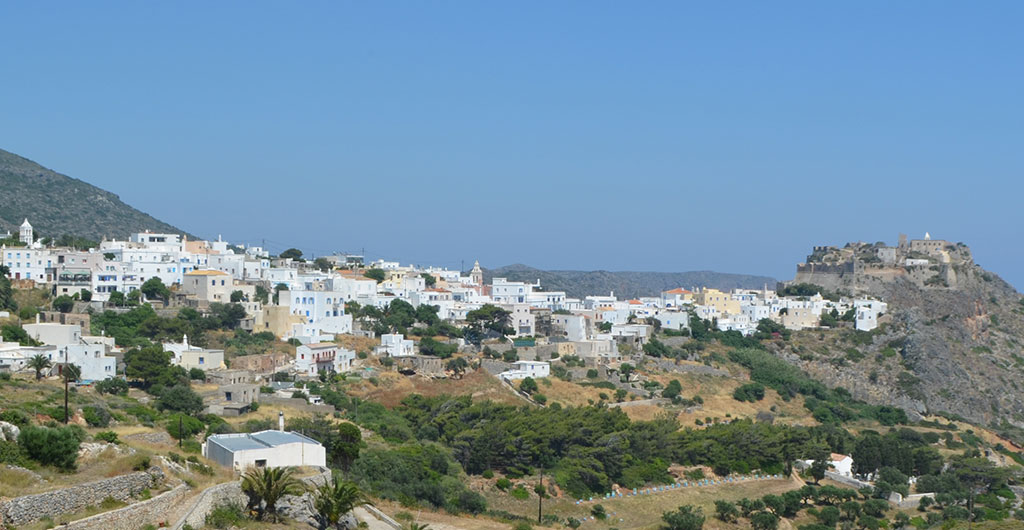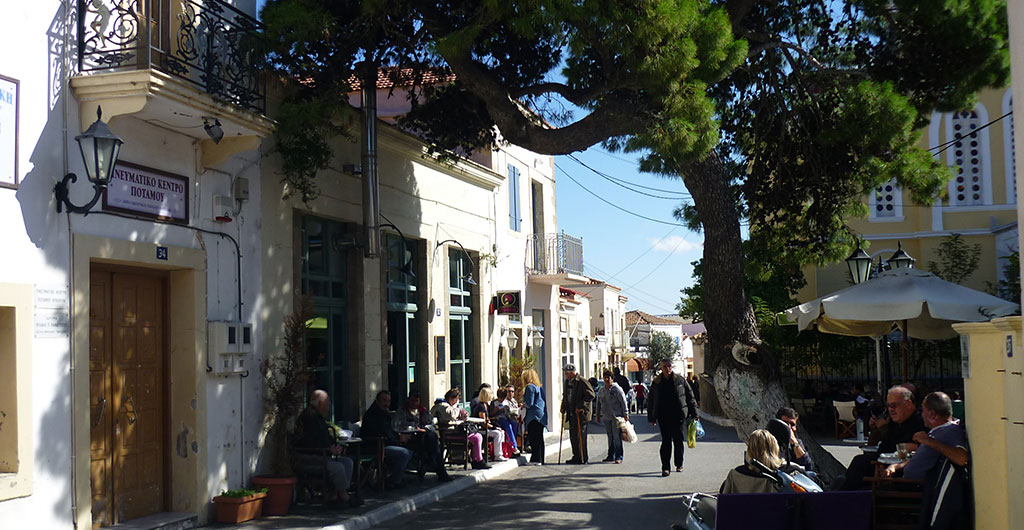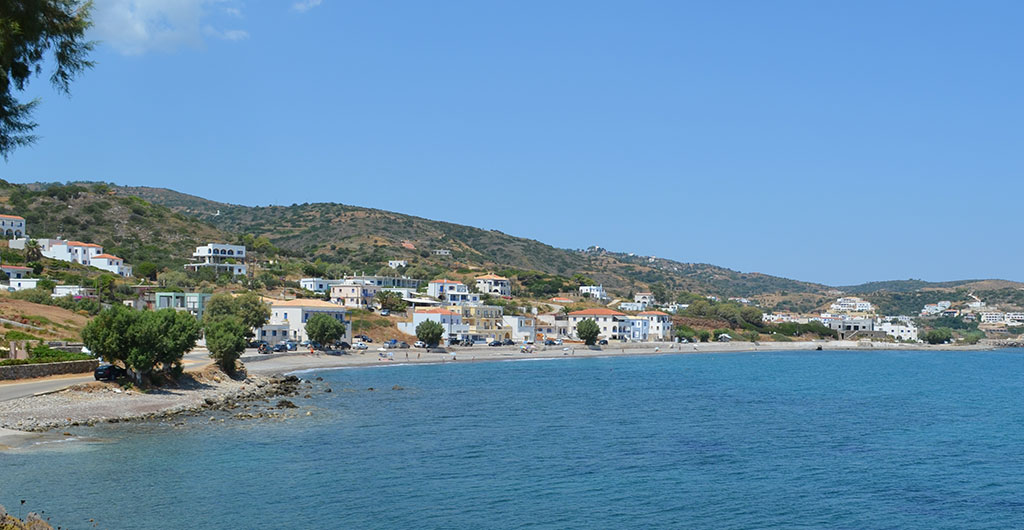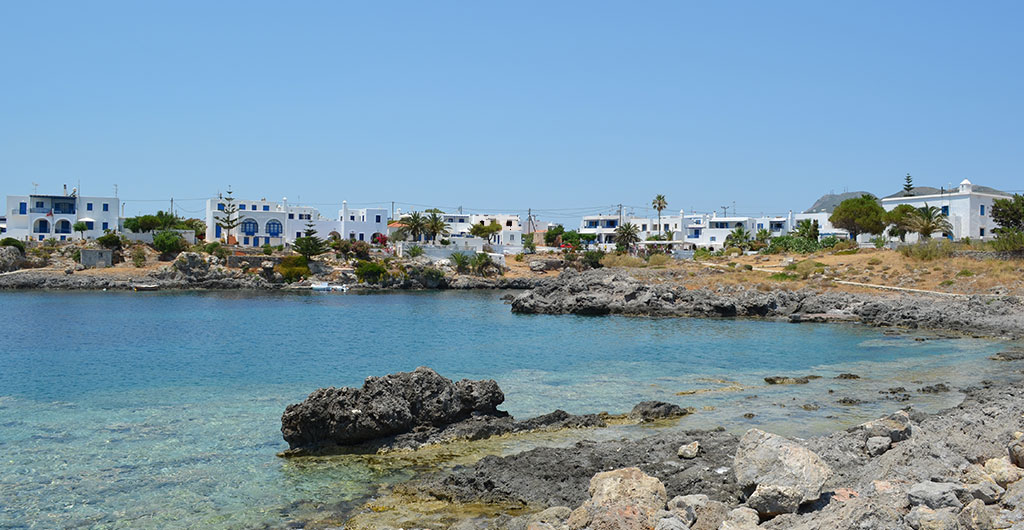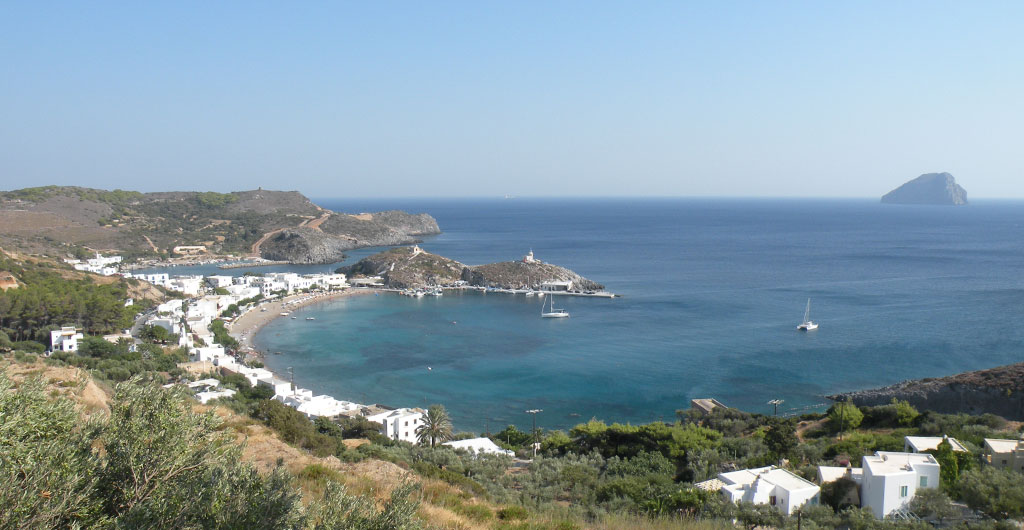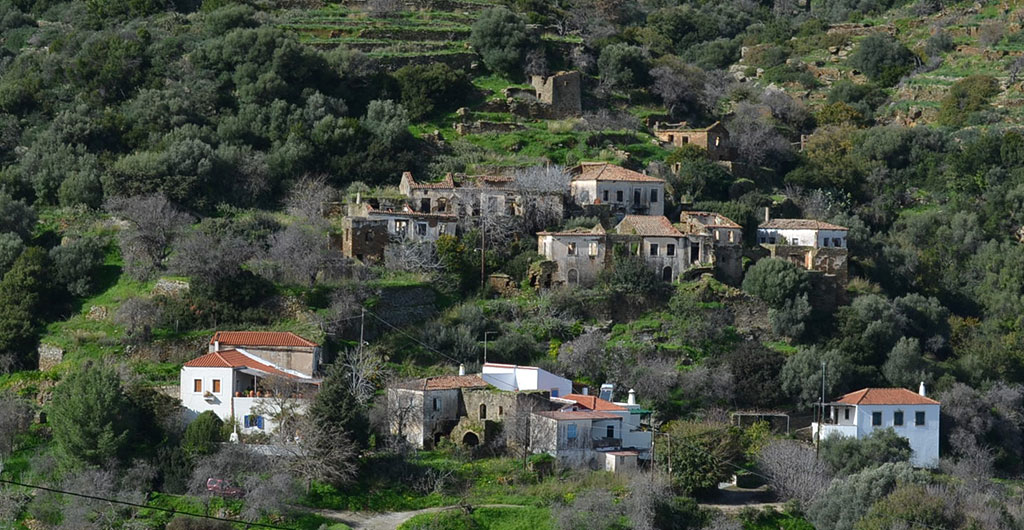Chora
The capital of the island, stretches out around the Venetian castle of the 13th century – renovated by the Venetians in 1503 – to share with it an overwhelming view to the Cretan Sea. On the cliffs around the castle a small yellow jewel of a flower grows; sempreviva is peculiar to the island. There are many shops, café, banks, post office, and other services.
Potamos
Potamos is the biggest village of the island. Even on a cool winter day, when the inhabitants of Kythera generally stay in, there will always be some chatters and banters at the cafés of the central square of Potamos. On Sundays, the flea market is just another excuse for the villagers to go out again, meet their friends, have a meze and some ouzo with them, and enjoy the atmosphere of their fantastic place. And guess what: they are open and friendly and welcome visitors to join them! Don’t forget to visit the historic building of the English school. In the summer, musical concerts and theatre shows often take place in the open air municipal theatre which is located at the east, towards Agia Pelagia.
Mylopotamos
Mylopotamos was a famous since the Venetian Domination. The Saint Mark’s Lion symbol of the Serenissima Republic of Venice still adorns the gate of the remains of the castle (built in 1565) in the Kato Chora neighbourhood. The village is beauteous for the running waters, the plane trees, the ponds with the ducks, the traditional architecture, and the astonishing falls of the Fonissa ravine. Walk down the latter to marvel at a spectacular row of watermills and waterfalls. You’ll be in awe when you will have reached the quite beach of Kalami. Mountaineering equipment recommended.
Avlemonas
Avlemonas is the most beautiful village of it. Crystal blue-azul waters bathe the frisky morphology of little bays to match with the cycladic architecture of the houses and the cobblestone paths around them into an attractive ambience of recreation and wellness.
Agia Pelagia
Agia Pelagia is one of the biggest villages of Kythira and undoubtedly its accommodation, food and shopping centre. People tend to stay there not only because of the beautiful nearby beaches, but also for the joys of caving. In fact, the 120m² large cave of Saint Sophia (one of the three of the island with the same name) and the cave of Venus in the ravine of Galani are definitely worth a visit. You are going to love the island anyway; but for those who might wish to spend there the rest of their lives, their chance flows in the potable waters of the source at the entrance of Agía Pelagía: legend has it that if you drink from that source, you’ll get married on Kythera.
Kapsali
Kapsali could be said to be the busiest spot for tourists. Full of cafés, tavernas, bars and boasting a marina too, Kapsáli is where the night of the island turns energetic and eager for a meeting and romance!
Mitata
If lush vegetation is your thing, then you’ll surprise no one by stating that you regard this village as the top beauty of Kythera. With an exhilarating view to the gorge of Tsakonas, the village lazily enjoys its position amongst trees, shrubs, and plants. This rich vegetation is the habitat of a variety of nectarines that is unique to this place. Before watering your mouth, this fruit will bring a delightful sensation to your touch; that’s why the locals call them “breasts of Aphrodite”.
Karavas
The village of Karavas is located in the northern part of the island, a few kilometers from Potamos, the largest of Kythera’s villages. It is close to a large ravine where all sorts of trees cover fresh water springs flowing from the hills. The village is beauteous for the traditional architecture of the houses.


 Ελληνικά
Ελληνικά